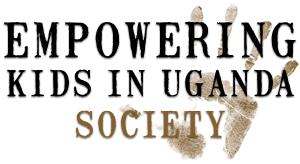The conflict in Northern Uganda is one of the longest running conflicts in Africa.
Yet it is difficult to know when war began in Uganda. The sense of social and cultural cohesion among the various ethnic groups within Uganda began to unravel with the ivory and Arab slave trade in the nineteenth century. Today, Acholi children happily guide you through Fort Padiko where hundreds of axe marks remain chiseled into the rock face demarcating the location where ‘weak’ Acholi slaves lost their heads and were fed to hungry lions. In 1894, Uganda became a British protectorate until independence in 1962. The British colonials assigned Acholi men to major positions within the security sector of the colonial government, cementing their identity as violent warriors, which lasts until today.
The first Ugandan government under Milton Obote (1962-1971) was removed by the infamous Idi Amin (1971-1979). In 1980, Obote regained power with a brutal legacy defined by the deadly Ugandan Bush War (1981-1986). In 1986, the National Resistance Army (NRA) led by Yoweri Museveni effectively ousted Obote and defeated the Acholi defectors of Obote’s Uganda National Liberation Front (UNLA). Museveni continues to be president of Uganda.
From the oppression experienced by the Acholi people by Musevni’s NRA, arose the prophetic Holy Spirit Movement (HSM) led by Alice Lakwena, a woman who claimed to be possessed by a Christian spirit called Lakwena. The ensuing war devastated the Acholi population and Lakwena escaped to Kenya. The new leader Joseph Kony also proclaimed to be possessed by the spirit Lakwena and renamed the movement, the Lord’s Resistance Army (LRA). The LRA sought to overthrow the Museveni Government and replace it with one based on the biblical ten commandments. In recent years, this political motivation has been questioned.
By the early 1990s the LRA began large-scale abductions of Acholi people. By 2006, up to 75,000 Acholi had been abducted, including up to 38,000 children. The LRA forced many of these children to kill their own families, friends, and neighbours. Many were forced to ‘marry’ into the LRA ranks, bearing children. Others served as labourers and porters, often to the point of death. At the peak of the conflict up to 90% of the Acholi population had been forced into squalid and over-crowded internally displaced camps. This led to disruptions in education, subsistence farming, services, and general economic activity; leaving many people forced to beg.
The 2006 ceasefire and Juba Peace Talks increased hope amongst the people, and large scale movement from the camps began in 2008. Unfortunately, the final peace talk in 2008 failed and the LRA continues their abductions and attacks in the Democratic Republic of Congo, Central African Republic, and South Sudan.
Since the early days of the war, many Acholi people have worked continuously to bring peace and healing to their people and land. Today, northern Uganda is peaceful, but the wounds have yet to heal. The Acholi people continue to hope for a resolution to this conflict and to bring their children home. They believe that peace will come from mediation rather than military action.
